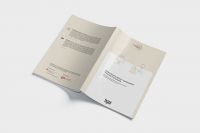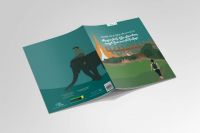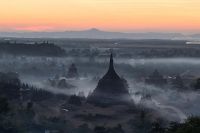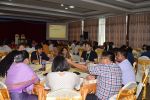Magical Myanmar Travel Magazine Interviews Vicky Bowman
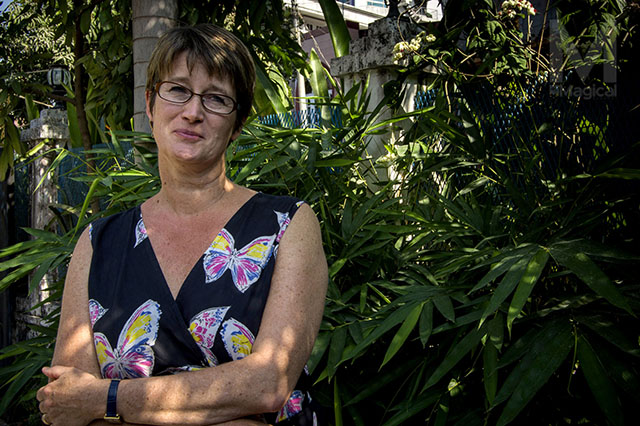
The Myanmar Centre for Responsible Business published a sector-wide impact assessment on tourism in 2015, and has since co-hosted a number of multistakeholder discussions on responsible tourism and community based tourism. Magical Myanmar Travel Magazine interviewed Vicky Bowman for a February 2018 Special Supplement.
Q. What does Ecotourism mean? Does it exist in Myanmar ?
The International Ecotourism Society defines ‘ecotourism’ as “responsible travel to natural areas that conserves the environment, sustains the well-being of the local people, and involves interpretation and education”. This definition is similar to that of the UN World Tourism Organisation which identifies it as ‘nature-based forms of tourism in which the main motivation of the tourists is the observation and appreciation of nature as well as the traditional cultures prevailing in natural areas’.
Generally ecotourism involves small groups whose visits support locally-owned businesses.Part of their spending may go towards local organisations of the government to protect the environment at the destination. This means that there is a significant overlap between ecotourism and community-based tourism (CBT). ASEAN defines CBT as ‘tourism activity, community owned and operated, and managed or coordinated at the community level that contributes to the well-being of communities through supporting sustainable livelihoods and protecting valued socio-cultural traditions and natural and cultural heritage resources’.
CBT can be seen as another version of ecotourism, with less focus on nature, and more focus on local communities. The NLD Government is prioritising it, but needs to ensure that they are not taking a top-down approach of designating CBT destinations rather than community-based approach in which the community and the tour operators collaborate to decide what will work.
In 2015 the Myanmar government, with assistance from ICIMOD, adopted an Ecotourism Policy and Management Strategy for Protected Areas (2015-2025). This took a much more restricted definition of Ecotourism in Myanmar as ‘tourism-related activity in and around its protected areas’. It went on to say that it was focussed on‘management tools, systems and processes to deliver three elements: biodiversity and ecosystems conservation; education and learning to enable hosts and visitors to understand and engage with management approaches to protect and conserve the natural and cultural assets of these areas; and economic and social benefits to communities in and around protected areas to (a) reduce and eliminate unsustainable practices, and (b) engage them in collaborative approaches to protected area management’.
Furthermore – and doubtless in view of resource constraints and the degradation of many Protected Areas (PAs) - the Strategy decided only to focus onecotourism in twenty-onePAs. A number of these (Hkakaborazi, Hponkanrazi, Hukaung Valley, Indawgyi, Lampi, and Thamihla Kyun) were identified as having major access constraints. Others also hadchallenging access (Alaungdaw Kathapa,Chattin, Natmataung, Meinmahla Kyun, Panlaung and Pyadalin Cave). Only eight of the twenty-one were considered easily accessible to tourists (Hlawga,Inlay, Kyaikhtiyo, Lawkanandar, Moeyingyi, Phokyar and Myaing Hay Wun, Shwesettaw and Popa Mountain and Wetthikan).
The government’s definition of Ecotourism deserves review, and coordination with the developing discussions around community-based tourism. Currently the restricted definition excludes the growing number of tourism products outside Protected Areas which meet international definitions of ecotourism and community-based tourism. For example, tourists now have the opportunity to visit villages near Myaing, and discover local culture, agriculture and nature, and stay in a lodge which is a ‘plastic free zone’ definitely meets both ecotourism and CBT criteria. Ecotourism in Myanmar should therefore not be seen as something confined to Protected Areas. Wherever there are rural areas of Myanmar which are accessible for tourists, there is potential for ecotourism/CBT.
Furthermore, the designation of certain major pilgrimage sites such as Kyaiktiyo and Shwesettawas ecotourism destinations is questionable, given the sheer numbers of domestic visitors (over a million a year in the case of Kyaikhtiyo, and over 200,000 for Shwesettaw). The 2015 Myanmar Ecotourism Strategy discussed the need to identify ‘carrying capacities’ and define ‘limits of acceptable change’ and noted that these limits of acceptable change have, in some instances, already been surpassed in Hlawga, Inlay, Kyaikhtiyo; and Natmataung. No-one who has visited Kyaiktiyo and watched bins of trash being tipped over the mountainside, or walked up past stalls on the path selling endangered animal parts could consider this a credible ecotourism destination. But to restrict visitor numbers so that it could be more sustainably managed – as it appeared to be when I first climbed it in 1990, before the road was built - would undoubtedly be opposed by pilgrims.
Q. Are there guidelines or a certifiable standard that needs to be followed if something is to be considered ecotourism?
Some governments have developed ecotourism guidelines which have regulatory effect.For example, in Queensland, Australia, Ecotourism Guidelines are used to determine whether an operation will be authorised to operate in a national park area. In Myanmar, a similar approach is under development. A set of Guidelines for Developing Ecolodges in Myanmar was finalised in late 2017 by MONREC’s Nature and Wildlife Conservation Department, in association with ICIMOD, MoHT, Myanmar Responsible Tourism institute, Myanmar Hill Lodges and the Biodiversity and Nature Conservation Association (BANCA). The Guidelines are intended to be used in the planning, design, environmental impact assessment and construction ofan ecolodge in Protected Areas. But the Guidelines note that they can also be used to guide ecolodge development in othernatural areas.
As these guidelines are new, and have not yet been fully integrated with the EIA process, it is too early to say whether they will strengthen the weak regulatory framework. I think it would be good to see not just MONREC, but the Ministry of Hotels and Tourism using them as a basis to prevent accommodation self-identifying as an ‘ecolodge’ without having been designed according to the guidelines – if you Google ecolodge and Myanmar you find a few of those. It’s also important to ensure that the operation, as well as the construction, of an ecolodge, meets the guidelines. If you are a hotel on an island, you cannot market it as an ecolodge if the island now receives 1500 cruise ship visitors a day, several times a month.
Specific local guidelines for ecotourism visitors are often needed which should be written with expert and local community input. For example, the Wildlife Conservation Society has developed guidelines for watching Ayeyarwady dolphins to ensure that they are not harassed.
When it comes to guidelines and certification, it’s important to recognise that there is a difference between ecotourism and sustainable – or responsible - tourism. Ecotourism is generally a subset of sustainable tourism. Criteria for sustainable tourisminclude those of the Global Sustainable Tourism Council (GSTC) (www.gstcouncil.org) which offers a certification process. These criteria cover destinations, hotels and tour operators. There are other standards which are generally aligned with GSTC standards, such as Earthcheck and Travelife. Two Myanmar tour companies, ExoTravel and Khiri Travel, are certified by Travelife (www.travelife.info), and a number of other tour operators are classified as Travelife Partners with a demonstrated- but not yet audited and certified – commitment to sustainability. However not every GSTC-certified destination, product or organisation is an ecotourism product, since many have a focus on more mainstream tourism, but want to operate sustainably wherever they are.
Q. What are the challenges for developing ecotourism in Myanmar ?
Developing ecotourism requires action by the government, the tour operator and other service providers, and tourist. The government needs to establish the frameworks for ensuring nature conservation, and lay down rules for visitors. The tour company needs to ensure that its products are marketable, respect the local community and environment and bring them benefits. And the tourist needs to behave in a way which ‘leaves only footprints’ and respects local culture and people.
Apart from general human resource constraints, including in government, one of the main challenges is a lack of joined-up government, both at national and regional level. In the Ministry of Natural Resources and Environmental Conservation (MONREC), the two key departments, one responsible for Protected Areas, and the other for EIAs, need to coordinate closely. So does the Ministry of Hotels and Tourism, the Myanmar Investment Commission, and the relevant Regional Government.
Sometimes Ministries adopt policies or regulations which actively undermine the potential for ecotourism, such as MoHT hotel and guesthouse licencing requirements which include a requirement for a minimum number or rooms for a hotel or guesthouse, or for flush toilets and showers, even when the carrying capacity of the ecologically sensitive site makes these inappropriate. These inconsistencies need to be addressed, and the government needs to focus on regulating what’s necessary, particularly environmental impacts.
Another major reform needed is to ensure that user fees – visitor entry, or room taxes – are used for local environmental conservation – ‘payment for ecosystems services (PES)‘ in the jargon. As the Ecotourism Strategy noted, at present Hlawga, Inlay, Kyaikhtiyo, Lawkananda, Moeyingyi and Natmataung charge visitor entry fees but the income generated does not always contribute to PA management costs. A similar situation exists with regard to accommodation agreements with the private sector, and there are currently few if any good examples of tour operators that undertake ecotourism-related activities within PAs entering into user-fee agreements with PA management bodies. The recent amendments proposed to the 1994 Protection of Wildlife and Protected Areas Law have not addressed this weakness. It’s essential that these user fees are used for protection, not promotion.
Q. How does Myanmar compare to neighbouring countries in its potential for ecotourism?
Given Myanmar’s incredible variety of landscape, biodiversity and ethnic cultures, it has huge potential. It should be able to compete with Vietnam, Thailand, Malaysia and Indonesia. However, that potential is not yet met. This is partly due to the cost of tourism which is higher the neighbouring countries, and provided less good services and safety. Accessibility is also a problem, which is partly linked to the lack of peace in some areas, and poor transport infrastructure. But it is also due to uncertain government policy, for example for travel permission. For example in December 2016, the government cancelled all tourist permits to Restricted Areas which needed prior permission, such as northern Kachin State, which pole-axed the developing tourism industry around Putao.
However to realise its ecotourism potential, the country needs to not only address those challenges but also step up environmental protection. Otherwise the potential will be destroyed. An example is the potential for scuba diving in Mergui Archipelago, which I took liveaboards to in 2002 and 2004. The quality and value for money of diving in Myanmarcannot compete with elsewhere inSoutheast Asia or the Maldives due to decades of environmental destruction. Dynamite fishing has destroyed fish populations and coral, as has shark finning. Effective cross-government action is essential, and this should involve the Navy, who have proved to be the best protector of Myanmar’s reefs around the islands where they are stationed.
The same is true for waste management. There is no point in promoting ecotourism around Ngapali or up Kyaiktiyo if the ecotourist first has to go past piles of garbage on the beach or by the roadside. If the local government fails to manage waste, it will damage not only ecotourism, but ultimately mainstream tourism.
Q. In your opinion, what are the three most exciting ecotourism opportunities in Myanmar?
There are undoubtedly amazing trekking and birdwatching opportunities in Myanmar’s mountain regions such as Chin State, Shan State and Kachin State, and in onshore Tanintharyi.However accessibility and in some cases permitting is a challenge.
These challenges need to be handled wisely. If accessibility is ‘improved’ by cutting a road up into a mountain without considering the environmental impacts and the negative effects it can bring, the ecotourism opportunity will be destroyed. I enjoyed my four hour walk up Natmataung in 2005, stopping to catch my breath and watch white-browed nuthatch and sunbirds. I’m not sure I want to go back, now that a road has been built.
MCRB has been working a lot on Tanintharyi, so I am looking forward to visiting the Wa Ale Island resort in Lampi National Park. This is the first example of a MONREC/NCWD licenced ecolodge in a Protected Area. It’s also demonstrating how a permanent ecotourist accommodation presence can have a net positive impact on biodiversity. The resort’s Lampi Foundation hasworked with NCWD and the Wildlife Conservation Society to developa turtle hatchery by the resort which released 500 baby turtles in 2016 and over 600 in 2017.
For a long weekend away from Yangon, I love going to Meinmahla-kyun south of Bogale, for mangrove, birdwatching and crocodile-watching in the Nature Sanctuary, staying in the FREDA guesthouse. If the season is right, this is ideally topped off with an overnight trip to stay in the FFI guesthouse on Gadongalet Island to see turtle-hatching and birdwatching. However the number of turtle nests has plummeted since I first visited in 2006, and the Fisheries Department’s attempts to protect turtle nests in the area using local volunteer wardens have – sadly - been undermined by commercial fishing interests and politicians in Pyapon.
Q. What is a good model of an ecofriendly business in the tourism currently operating in Myanmar?
I have just arrived at one for my Christmas vacation! The Arakan Nature Lodge at Zikhone north of Gwa has just opened. It has been built using recycled wood bought from old local houses. It is designed and built using traditional methods such as nipa thatch. The food is sourced locally, and the employees are locals. The numbers of bungalows are limited to ten. Particular care has been taken with waste water, using Swedish composting toilets which separate the solids and the liquid waste. Perhaps most importantly, it is very transparent about how it has built the Lodge, and the challenges it faces, so that guests can have confidence that its ‘eco’ claims are genuine. It has a detailed website, and has even made a film about its construction.
Q. Lastly, what advice would you give to travellers looking for an environmentally friendly experience of Myanmar?
The first responsibility is with the traveller. They need to do their research and understand the country and the products on offer. One source of information is www.myanmar-ecotourism.org which has been supported by the Harrison Institute and the UK’s Darwin Initiative who have been working in Myanmar on nature conservation for almost two decades, in collaboration with Myanmar Tourism Federation. This site lists a number of nature-based tourism opportunities, including birdwatching and trekking. Choose a specialist tour operator like SST, Shan Yoma or Myanmar Birding, who have good links with local nature organisations and the Forest Department, and can find good nature guides. Another source of information for community-based tourism programs is on Facebook, with the Community Tourism Teashop Facebook page and www.tourismtransparency.org
Also, the traveller should also give feedback to tourism service providers if they believe that they can do better in terms of environmental protection, or if they feel that the tour is not being respectful of local culture or meeting their experience of ecotourism in other countries. And of course, they need to set a good example themselves, take a refillable bottle, refuse single use plastics, take their litter home, don’t kick the coral and leave the butterflies alone.
အထက်ပါအကြောင်းအရာနှင့်ပတ်သတ်၍ ဆက်လက်ဖတ်ရှုလိုပါက
- ခရီးသွားလာရေးလုပ်ငန်း
- စာတမ်းအသစ်နှင့် မကြာမီတွင် ကျင်းပပြုလုပ်မည့် ခရီးသွားလုပ်ငန်းကဏ္ဍ၏ လူ့အခွင့်အရေးဆိုင်ရာ အွန်လိုင်းဆွေးနွေးပွဲ
- မြန်မာ့ခရီးသွားလုပ်ငန်းကဏ္ဍအတွက် အဆိုပြုလွှာအသစ်
- Planning for a Brighter Future in Mrauk U: Cultural Heritage and Tourism Management
- 4th National Conference on Communities and Tourism 2019
 English
English မြန်မာ
မြန်မာ မြန်မာ (unicode)
မြန်မာ (unicode)



